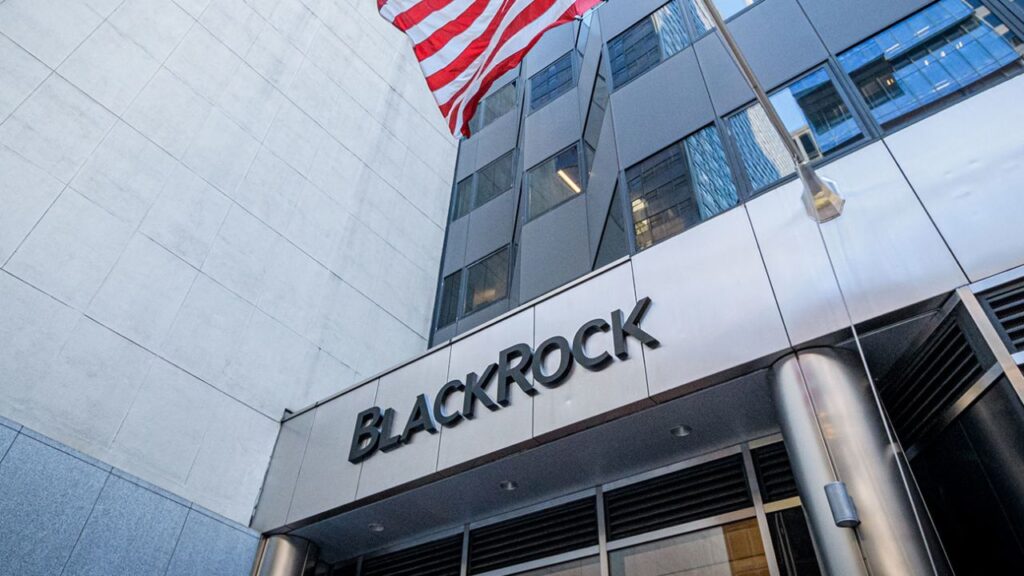Mike Belshe, the CEO of cryptocurrency exchange BitGo, is optimistic about the prospects of a spot Bitcoin exchange-traded fund (ETF) gaining approval.
However, he acknowledges that there are hurdles to overcome in this journey.
In an interview with Bloomberg on November 16, Belshe revealed that discussions between companies seeking Bitcoin ETF approval and the United States Securities and Exchange Commission (SEC) indicate a favorable outcome is on the horizon.
Despite his optimism, Belshe cautioned that challenges lie ahead.
He believes that the SEC may still reject more ETF proposals before granting approval.
One key requirement emphasized by the SEC is the separation of cryptocurrency exchanges from custodial services. Belshe stresses that addressing this condition is essential to securing approval.
Belshe referenced Sam Bankman-Fried, the former CEO of the now-defunct crypto exchange FTX, who advocated for multifaceted operations.
Bankman-Fried proposed taking on various functions within the industry to improve efficiency and compliance with regulations.
READ MORE:Singapore’s Central Bank Launches Live Pilot for Singapore Dollar-Based CBDC
The anticipation surrounding the potential approval of a spot Bitcoin ETF has led to a significant increase in fees on the Bitcoin blockchain.
On November 16, transaction fees on the Bitcoin blockchain reached $11.6 million, representing a 746% rise in average transaction fees compared to 2022.
Despite these challenges, Bitcoin has remained stable, trading near 18-month highs and surpassing its previous bear market range.
Currently, 12 asset management firms are awaiting decisions on their Bitcoin ETF applications.
Bloomberg analyst James Seyffart predicts a 90% chance of approval for these applications by January 10, 2024.
In summary, Mike Belshe, CEO of BitGo, remains hopeful about the approval of a spot Bitcoin ETF.
While he anticipates a positive outcome, he acknowledges the need to address market structure concerns outlined by the SEC.
The surge in Bitcoin blockchain fees underscores the growing excitement surrounding the ETF’s potential approval, and the cryptocurrency market continues to show resilience despite regulatory challenges.
CoinShares, the prominent European digital asset manager, has recently secured an exclusive option to acquire Valkyrie Funds, the exchange-traded fund (ETF) unit of its United States-based competitor, Valkyrie Investments.
This strategic move, announced on November 17, signifies CoinShares’ intent to expand its operations into the United States, potentially positioning itself at the forefront of the burgeoning ETF market in the country.
Jean-Marie Mognetti, CEO of CoinShares, expressed his optimism about this acquisition, emphasizing its potential to capitalize on the current fragmentation within the global ETF market.
He noted that the establishment of crypto spot ETPs in Europe since 2015 is an indicator of the evolving landscape, with the U.S. poised to follow suit.
Mognetti believes that this market disparity presents both challenges and significant opportunities for CoinShares.
The option to acquire Valkyrie Funds will remain active until March 31, 2024.
During this period, Valkyrie Funds will continue to operate as an independent entity until the acquisition by CoinShares is finalized, marking an exciting development in the digital asset investment sphere.
In addition to the acquisition option, CoinShares and Valkyrie have also agreed on a brand licensing term.
This agreement allows CoinShares’ name to be used in future S-1 filings with the U.S. Securities and Exchange Commission (SEC), which are typically filed when companies plan to go public.
READ MORE: New York Tightens Cryptocurrency Listing and Delisting Rules to Enhance Investor Protection
If the SEC approves the Valkyrie Bitcoin Fund, it will incorporate the CoinShares name into the ETF, further solidifying their collaboration.
Valkyrie had previously filed for the spot Bitcoin (BTC) ETF on June 21, along with other financial heavyweights like BlackRock.
CoinShares, overseeing more than $3.2 billion in assets under management, had already expressed optimism about the U.S. cryptocurrency ETF market in September.
They emphasized that the United States, as an economic powerhouse, is actively addressing digital asset regulation, dispelling any notion of lagging behind in this rapidly evolving space.
In summary, CoinShares’ exclusive option to acquire Valkyrie Funds marks a strategic leap towards expanding its presence in the United States and tapping into the potential of the growing ETF market.
This move holds the promise of reshaping the digital asset investment landscape on a global scale.
On November 14th, Bitcoin faced a critical test as it dipped to the $35,000 support level, experiencing a significant drop in price.
In just one hour, the cryptocurrency plummeted by over $1,000, creating a sense of sell-side pressure in the market.
Fortunately, Bitcoin managed to find support at the $35,000 mark, acting as a springboard for a recovery to approximately $35,600 at the time of this report.
This sudden volatility came shortly after what initially seemed like a positive development for Bitcoin and the crypto market, with United States inflation data showing a slowdown beyond expectations.
However, it became evident that beyond smaller retail investors, there was limited enthusiasm for purchasing Bitcoin at its previous levels, which had recently reached 18-month highs.
Analysts pointed out that Bitcoin whales began to cash in on their profits on November 3rd as the BTC price surged from $35,000 to nearly $38,000. Over 15 wallets holding more than 1,000 BTC each either sold or redistributed their holdings.
An accompanying chart from on-chain analytics firm Glassnode revealed that the number of whale wallets had reached its lowest point in about a month.
Following the release of the inflation data, monitoring resource Material Indicators highlighted the need to anticipate periods of downside movements within the broader Bitcoin uptrend.
They cautioned against assuming that the market would only move upwards, emphasizing that market dynamics are more complex and require patience and conviction from investors.
A subsequent update revealed that bid support had shifted closer to the spot price, moving from $33,000 to $34,500, while whales continued to offload their holdings.
One notable development was the surge in long liquidations, with data from CoinGlass indicating the highest daily volume of long Bitcoin liquidations in several months, totaling $120 million on November 14th.
Interestingly, this amount was nearly equal to the short Bitcoin liquidations that occurred when the price spiked to $38,000 the previous week.
Furthermore, across the cryptocurrency market, long positions in various cryptocurrencies were liquidated, amounting to nearly $300 million.
In conclusion, Bitcoin’s recent price action showcased the cryptocurrency’s ongoing volatility, with fluctuations driven by factors such as profit-taking by whales and market sentiment.
Traders and investors need to exercise caution and be prepared for both upward and downward movements in the ever-evolving cryptocurrency market.
In less than two months, institutional investment in Bitcoin has witnessed a staggering influx of over $1 billion, signaling a resurgence in interest in cryptocurrencies.
CoinShares, a prominent crypto asset management firm, highlighted this remarkable trend in its latest weekly report on November 13, underscoring the growing capital flow into Bitcoin and altcoins.
The surge in Bitcoin, Ether, and select altcoin prices can be attributed to the mounting excitement surrounding the potential approval of the United States’ first spot exchange-traded fund (ETF).
Since November 2022, the total market capitalization of the cryptocurrency market has skyrocketed by $600 billion, according to data from TradingView.
However, the past two months have witnessed a substantial uptick in funds allocated to crypto investment products, with CoinShares revealing, “Digital asset investment products saw inflows totaling US$293 million last week, bringing this 7-week run of inflows past the US$1 billion mark, leaving year-to-date inflows at US$1.14 billion, making it the third-highest yearly inflows on record.”
One of the most noteworthy statistics indicating the resurgence of crypto in 2023 is the Assets Under Management (AUM) of crypto exchange-traded products (ETPs).
Since the beginning of the year, this figure has nearly doubled, with a remarkable 10% increase occurring in just the past week.
CoinShares noted, “At US$44.3 billion, total AuM is now the highest since the major crypto fund failures in May 2022.”
READ MORE: Ripple CEO Advocates Multichain Future and Regulatory Clarity at Ripple Swell 2023
Moreover, the report highlighted that investors seeking long positions in Bitcoin accounted for the majority of the trading volume.
“Bitcoin saw inflows totaling US$240 million last week, pushing year-to-date inflows to US$1.08 billion, while short-bitcoin saw US$7 million outflows, indicative of continued positive sentiment,” the report stated.
This renewed interest has also spurred on-chain analytics firm Glassnode to reevaluate Bitcoin supply dynamics.
As the fourth halving event approaches, Bitcoin holdings for storage now exceed the amount mined by a factor of 2.4.
This development signifies a significant milestone for Bitcoin, attracting intrigue from investors due to its impressive historical returns.
Furthermore, Philip Swift, the creator of the statistics platform Look Into Bitcoin, pointed out the increasing number of wallet entities, both large and small, as a sign of growing adoption.
It’s important to note that this article does not offer investment advice or recommendations.
All investment and trading decisions involve risk, and readers are advised to conduct their own research and due diligence before making any investment decisions.
On November 12, the Bitcoin mining community reached an annual all-time high (ATH), generating more than $44 million in combined block rewards and transaction fees.
Bitcoin mining relies on specialized computer equipment, known as mining rigs, to confirm transactions and create new blocks. Miners currently earn 6.25 BTC for successfully creating a block, along with transaction fees.
This milestone marked the first time in 2023 that daily Bitcoin mining rewards surpassed the $44 million mark, a level previously observed in April 2022, as reported by data from blockchain.com.
Between April 2022 and November 2023, Bitcoin miners faced several challenges that contributed to a decline in their revenue.
These included a prolonged bear market, negative investor sentiment stemming from scams and ecosystem collapses, and regulatory restrictions hindering Bitcoin transactions.
However, 2023 marked a turnaround for the industry, driven by crypto entrepreneurs who worked to restore investor confidence. Increasing market prices and growing public interest led to a year-long uptrend in mining revenue.
READ MORE: Former FTX Executives Launch Backpack Exchange in Dubai
Marathon Digital Holdings, a prominent Bitcoin mining firm, reported a staggering 670% year-on-year revenue surge in the third quarter of 2023, alongside a nearly five-fold increase in Bitcoin production.
Beyond individual miners and companies, many countries actively participate in securing the Bitcoin network through mining operations.
For instance, Bhutan, a landlocked Asian nation, has been engaged in Bitcoin mining powered by hydropower since the cryptocurrency’s price was at $5,000 in April 2019.
Bhutan is now exploring partnerships to expand its mining endeavors further, including negotiations with the Nasdaq-listed mining company Bitdeer to secure 100 megawatts of power for a Bitcoin mining data center within its borders.
This collaboration could boost Bitdeer’s mining capacity by approximately 12%.
In summary, the Bitcoin mining community achieved a significant milestone in November 2023, reaching an annual all-time high in revenue.
While the industry faced challenges in previous months, it experienced a resurgence in 2023, fueled by market dynamics, increased interest, and strategic efforts by key players in the crypto space.
Bitcoin Argentina, a non-governmental organization, has unveiled a draft bill aimed at regulating the cryptocurrency market in a manner that upholds decentralization and bolsters public trust.
This significant shift in stance was presented by Bitcoin Argentina’s president, Ricardo Mihura, during LABITCONF 2023 in Buenos Aires on November 10.
Notably, Bitcoin Argentina had previously resisted the idea of regulating the cryptocurrency industry.
However, the organization now contends that regulation is imperative not only to safeguard the blockchain but also to hold malicious actors accountable under the full extent of the law.
Ricardo Mihura emphasized their new approach, stating, “We have always rejected attempts to regulate the crypto economy, but this time we set ourselves the goal of giving a positive response, with only two purposes: preserving decentralization and protecting savings and public trust.”
He further expressed concern over dishonest actors and projects operating under the blockchain banner.
The proposed legal framework primarily revolves around categorizing cryptocurrency platforms and service providers into three distinct groups based on property rights: decentralized, locally centralized or willing to cooperate with authorities, and globally centralized.
Under this framework, platforms falling into the two centralized categories would be permitted to operate freely, but their customers would be afforded robust legal protection, ensuring the right to seek compensation in the event of a company’s collapse.
READ MORE: Attorney Makes Strong Case Against $770 Million Disgorgement in Ripple vs. SEC Legal Battle
Importantly, Argentina’s judiciary would not intervene in cases involving failures of decentralized platforms. The determination of a platform’s decentralization status would be made by courts when addressing claims made by purportedly affected customers.
Mihura argued against an outright ban on cryptocurrencies, emphasizing that such bans are ineffective due to the global nature of blockchain technology.
He stated, “Not even the United States can effectively prohibit the operation of the unlicensed cryptoeconomy…Argentina has no possibility of prohibiting its residents from operating in global environments.”
Therefore, instead of pursuing a top-down ban, the proposed bill seeks to offer the best possible legal protection to citizens, holding responsible parties and those profiting from fraudulent schemes accountable, up to the final victim.
This move by Bitcoin Argentina comes at a crucial time, just one week before Argentina’s presidential runoff election between Sergio Massa, the country’s economy minister, and Javier Milei, an economist-turned-politician advocating for the abandonment of Argentina’s central bank in favor of adopting the United States dollar.
Argentina faces a pressing inflation crisis, with a staggering annual inflation rate of 121.7% over the past 12 months, ranking as the fourth highest in the world.
Bitcoin is poised for a significant price correction, according to gold advocate Peter Schiff, just ahead of a crucial moment for institutional investors. Schiff, a long-time critic of Bitcoin, has expressed concerns about the recent price surge of BTC.
Schiff, the chief economist and global strategist at Europac, has consistently argued that Bitcoin’s value will ultimately drop to zero, contrasting it with gold, which he considers a reliable store of value.
He believes that most people only hold Bitcoin with the intention of selling it at a higher price later.
Now, as the BTC/USD pair hovers around 18-month highs, Schiff has turned his attention to what some consider a pivotal moment for cryptocurrency: the launch of the first Bitcoin spot price exchange-traded fund (ETF) in the United States.
This ETF is expected to gain approval in early 2024, and rumors of a possible approval in November have fueled last week’s price surge, pushing Bitcoin past $37,000.
While some anticipate a “sell the news” event, where investors reduce their exposure once the ETF is approved,
Schiff believes that a Bitcoin price correction may not even wait for that. In a recent survey conducted on November 9, Schiff presented two scenarios for a potential Bitcoin crash: one before the ETF launch and one after.
However, the majority of respondents chose the option to “Buy and HODL till the moon,” indicating their belief in Bitcoin’s long-term potential.
READ MORE: Michael Saylor Predicts Explosive 10x Growth in Bitcoin Demand by 2024
Despite the survey results, Schiff remains steadfast in his view, stating, “Based on the results, my guess is that Bitcoin crashes before the ETF launch.
That’s why the people who bought the rumor won’t actually profit if they wait for the fact to sell.”
Institutional sentiment regarding Bitcoin appears to be improving as the ETF debate leans in favor of Bitcoin.
Some analysts, like AllianceBernstein, have even predicted a peak price of $150,000 in the next cycle.
They anticipate that ETF flows could start slowly and gradually build up, leading to a cycle peak in 2025 rather than 2024.
This recent breakout in Bitcoin’s price is seen as a gradual pricing in of the positive ETF approval news, with market participants closely monitoring initial outflows and potential short-term disappointments.
As a disclaimer, it’s important to note that this article does not provide investment advice or recommendations.
All investment and trading decisions carry risks, and readers should conduct their own research before making any investment decisions.
BlackRock, a leading global investment management firm, has raised concerns about the treatment of spot-crypto and crypto-futures exchange-traded fund (ETF) applications by the U.S. Securities and Exchange Commission (SEC).
BlackRock recently confirmed its plan to launch a spot-Ether (ETH) ETF called the “iShares Ethereum Trust.”
The firm’s application, submitted by Nasdaq on November 9 through the 19b-4 form, questions the SEC’s handling of spot crypto ETFs, arguing that the agency’s reasons for consistently denying these applications are based on incorrect regulatory distinctions between futures and spot ETFs.
The SEC has not yet approved any spot-crypto ETF applications but has granted approval to several crypto futures ETFs.
The SEC has cited the supposedly superior regulation and consumer protections provided under the 1940 Act for crypto futures ETFs, in contrast to the 1933 Act that covers spot-crypto ETFs.
The agency also appears to favor regulatory and surveillance-sharing agreements with the Chicago Mercantile Exchange’s (CME) digital asset futures market.
READ MORE: Nigeria and Raspberry Pi Foundation Collaborate to Launch Code Clubs
BlackRock disputes the relevance of the SEC’s preference for the 1940 Act, arguing that it places restrictions on ETFs and ETF sponsors rather than on the underlying assets of the ETFs.
The firm contends that the distinction between the registration of ETH futures ETFs under the 1940 Act and spot ETH ETPs under the 1933 Act is essentially meaningless in the context of ETH-based ETP proposals.
BlackRock emphasizes that since the SEC has approved crypto futures ETFs via the CME, it has effectively acknowledged the CME’s ability to detect spot-market fraud that could impact spot ETPs.
Therefore, BlackRock believes that the SEC lacks a justifiable reason to reject its spot-Ether ETF application under its current regulatory framework.
Many crypto and ETF analysts anticipate that the first SEC approval of a spot crypto ETF, possibly related to Bitcoin, is imminent.
Bloomberg ETF analysts James Seyffart and Eric Balchunas even predict a 90% chance of approval before January 10 of the following year, signaling the potential expansion of the crypto ETF market.
During a speech at the 2023 Australia Crypto Convention on November 10, Michael Saylor, the co-founder of MicroStrategy and a well-known Bitcoin advocate, shared his bullish outlook for Bitcoin (BTC) and its potential for explosive growth in the coming years.
Saylor’s speech began with a retrospective look at the period from 2020 to 2024. He highlighted the remarkable transformation of Bitcoin from being considered an “offshore unregulated asset” to becoming an “institutionalized mainstream app.” This transition has been a significant development for the cryptocurrency.
In the near term, Saylor predicted that Bitcoin would evolve into an “adolescent mainstream asset” by the end of 2024.
He emphasized the critical factors of supply and demand that would influence this transformation.
Saylor anticipates a substantial increase in demand for Bitcoin over the next 12 months, with the potential for demand to double, triple, or even increase by a factor of 10 on a monthly basis.
Simultaneously, he pointed out that the supply available for sale would be halved in April, which is a result of the Bitcoin halving event. This drastic shift in supply and demand dynamics is expected to drive the price of Bitcoin higher.
Saylor likened the next 12 months for Bitcoin to a “coming out party,” where the cryptocurrency will graduate from its “college” phase and enter the real world as a mainstream asset.
Looking ahead to the period from 2024 to 2028, Saylor foresaw continued high-growth potential for Bitcoin.
READ MORE: Binance to Halt Russian Ruble Deposits and Withdrawals
He anticipated widespread adoption of Bitcoin in the big tech industry and mega banks worldwide. These sectors are expected to integrate Bitcoin into their products and services, leading to increased competition among companies like Apple and Meta (formerly Facebook) to acquire Bitcoin for potential profit.
Furthermore, Saylor mentioned the potential involvement of traditional financial institutions such as JP Morgan, Morgan Stanley, Goldman Sachs, Bank of America, and Deutsche Bank in offering Bitcoin-related services, including loans, mortgages, and custody.
This institutional participation is seen as another catalyst for Bitcoin’s growth.
In a long-term outlook, Saylor projected that Bitcoin would outperform other high-quality assets.
He suggested that Bitcoin could reach astronomical prices, potentially doubling, quadrupling, or growing even more over time, making it a formidable investment compared to traditional assets like the S&P 500 Index.
At the time of his speech, MicroStrategy, the company co-founded by Saylor, held approximately 158,400 BTC, and the firm had experienced substantial gains on its Bitcoin investment, which stood at around $900 million as of November 2, 2023.
Saylor’s bullish predictions reflect his confidence in Bitcoin’s future potential as a transformative and valuable asset.
Bitcoin is poised to experience a surge in institutional investments as anticipation mounts for the approval of a United States exchange-traded fund (ETF).
Dan Tapiero, the founder and CEO of 10T Holdings, has joined the ranks of Bitcoin bulls who believe that institutional adoption is on the horizon.
As the excitement surrounding the potential approval of a U.S. Bitcoin spot price ETF continues to grow, the price of BTC has responded with enthusiasm. BTC/USD reached its highest level in 18 months.
Simultaneously, institutional interest is showing signs of a significant shift. Open interest in CME Group’s Bitcoin futures markets, a traditional institutional platform for BTC derivatives, has surpassed that of Binance for the first time.
For Tapiero, this development marks a pivotal moment. He stated on November 10th, “Now begins the renewed drumbeat of ‘institutional adoption’ of Bitcoin, driven by real facts rather than hope.
As CME BTC futures open interest surpasses Binance in the #1 spot, a torrent of capital from the traditional financial world is about to enter.”
READ MORE: SEBA Bank Receives License from Hong Kong Regulator to Offer Crypto Services in Asia Pacific
Aggregate Bitcoin futures open interest reached over $17 billion on November 9th, marking a seven-month high. As of the current moment, it stands at around $15.5 billion.
The optimism surrounding the ETF approval, expected in early 2024 but potentially sooner, is widely shared in the market.
QCP Capital, a trading firm, highlighted the potential impact of a spot ETF for Ether in its latest market update, suggesting it could further boost the crypto market.
However, amidst this overall bullish sentiment, QCP cautioned that Bitcoin’s daily relative strength index (RSI) has been forming lower highs, signaling a potential cooling-off period from recent highs.
They emphasized the importance of caution as BTC faces crucial resistance levels and a triple bear divergence with the RSI, which historically indicates a slowdown in momentum.
At the time of writing, BTC/USD was trading near $36,500, while ETH/USD had surpassed the $2,000 mark with a daily gain of over 4%.
As institutional interest continues to grow, the crypto market remains on edge, eagerly awaiting the potential approval of a U.S. Bitcoin spot price ETF and the subsequent influx of capital from traditional finance.







